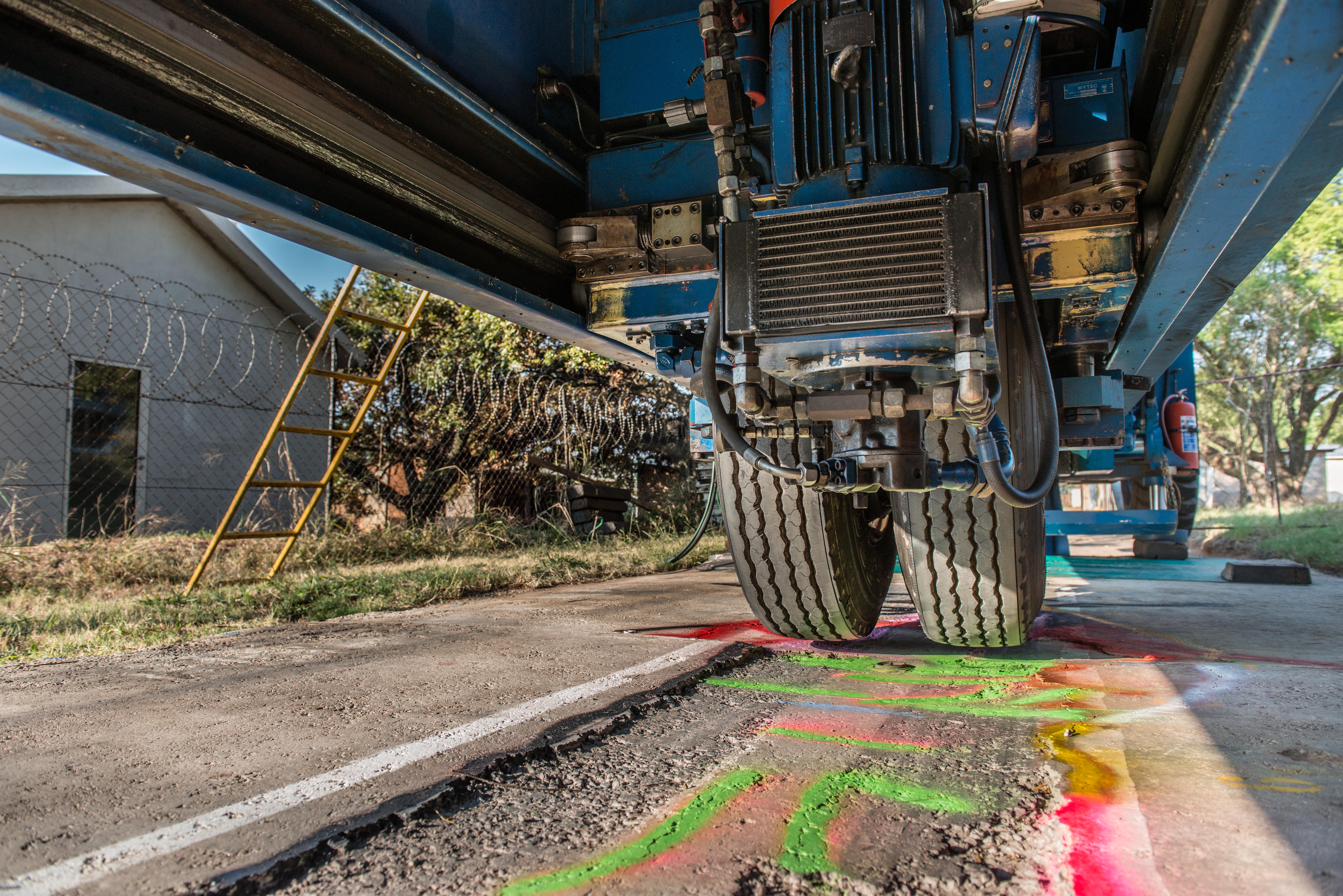In the halls of scientific innovation, South Africa’s heavy vehicle simulator (HVS) has carved out its place as a groundbreaking tool in road infrastructure. Developed by the CSIR, this huge machine has revolutionised the way roads are assessed and designed, offering a glimpse into the future wear and tear of roads under the relentless pressure of traffic.
The HVS is no ordinary tool – this is a machine that simulates traffic on a pavement for three months, round the clock, from which the likely performance of roads over several decades can be forecasted.
CSIR researcher Michandre Smit outlines the journey that began with the inception of the HVS, through challenges faced during commercialisation, and its profound impact on the construction industry.
While the transition from laboratory experiments to commercialisation for many technologies is a daunting path, for the HVS, Smit believes the journey was smoother than expected. Armed with a deep knowledge of lab testing and long-term pavement performance, the CSIR team filled the gap with accelerated pavement testing. This bridging technology expedited the understanding of how pavements would behave over two decades, offering a quicker alternative to the lengthy long-term tests.
The pivotal moment in the commercialisation of the HVS came when the CSIR had to prove the efficacy of the machine. South African companies invested significantly in HVS tests, and the results formed the foundation for catalogue designs used in the country. The HVS analysis package, Amy games, and Amy crimes emerged as key tools for translating data into actionable insights, establishing HVS as a reliable testing mechanism.
While the journey seemed relatively smooth, unexpected challenges arose with the transportation of the HVS to the United States of America. Seawater seeped into the machine during the journey, necessitating urgent repairs to showcase its functionality. Establishing the simulator’s credibility in the eyes of industry players took time and effort, with extensive long-term pavement performance testing serving as a crucial validation step.
The impact of the HVS on the construction industry has been profound. Traditional lab testing usually falls short of predicting real-world scenarios. The HVS serves as a bridge between laboratory experiments and full-scale pavement construction. Companies developing new materials turn to HVS for proof testing, ensuring their innovations stand the test of time. This not only expedites the validation process but also informs the creation of cost-effective and time-efficient road-building technologies.
Smit emphasises the importance of identifying industry partners at an early stage of the process. Understanding industry's needs and finding partners who believe in the technology are key steps. Collaborating with industry leaders is crucial, as they offer not only financial resources but also the capacity for research and development.
Initial funding for HVS came from SA Parliamentary Grants, followed by collaborations with various government entities. The partnership with Dynatest, a global company, marked a turning point, as it currently pays royalties to produce HVS machines worldwide. International collaborations not only bring financial support but also open doors to a broader market.
One of the notable success stories involves the HVS validating nano-organo silanes, a technology that is cutting road-building costs by almost 50% and construction time by 40%. The government is now exploring the widespread use of this technology in low-volume road construction, thanks to the rapid validation provided by HVS testing.
The journey from lab to market taught the research team invaluable lessons. External support played a crucial role, with retired experts contributing significantly. Partnerships, especially with international entities, proved instrumental in the global success of the HVS. Continuous development remains paramount, ensuring HVS stays ahead in the competitive landscape.
Patents, trademarks and copyrights were vital in securing the future of HVS technology. Regular upkeep of patents is emphasised, with Dynatest holding production rights and paying royalties. This not only safeguards the technology but also guarantees continued financial support.
Looking ahead, HVS continues to evolve due to global market demand for speed in pavement testing. In response, the CSIR developed the Traffic Stream Simulator to accelerate testing while minimising pavement damage. The Traffic Stream Simulator (TSS) project aims to provide results in a fraction of the time. The adaptability of the HVS allows for the simulation of jets taking off, showcasing its versatility in testing various scenarios.
Customisation based on client needs ensures that each HVS produced caters to specific testing requirements. Collaboration with Dynatest and other entities, both locally and internationally, ensured effective communication with clients. Training programmes and technology transfer initiatives enhance client understanding and usage of HVS.
According to Smit, HVS envisions continued relevance in all pavement testing scenarios for the next five to ten years. She further states, “As sustainability becomes a focus, the HVS will play a vital role in validating new technologies. The development of TSS promises faster and more cost-effective testing, expanding the simulator’s reach even further.”
